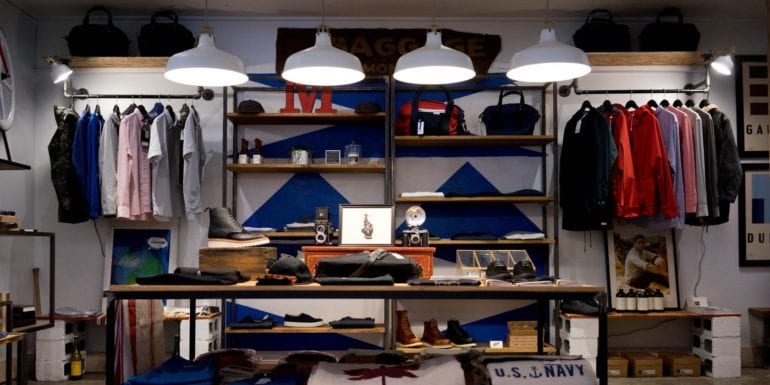Online Merchandising: How to Increase Sales in an Online Store

 |
Maksim Komonov is an e-commerce geek who loves experimenting with different platforms, technologies, services, and solutions. At the moment he is heads up digital marketing for Simtech Development, an e-commerce development firm. He has also been a contributor for Practical Ecommerce. |
Offline sales can be increased by placing the goods properly. For the Internet, this is also true. Let’s sort out what techniques of merchandising work for e-commerce.
Why Online Stores and Marketplaces Resort to Merchandising
Classic merchandising can be successfully used to solve the following problems of the online stores and marketplaces:
- Stimulate sales of certain categories and products.
- Promote more expensive products.
- Sell out stale goods.
- Attract attention to new products.
- Stimulate the purchase of more goods.
- Increase the average order value.
- Create a community of loyal buyers.
- Maintain the competitiveness of the store.
- Manage customer behavior.
Now let’s see what and how can be placed on the shelves of an online store to solve these problems through merchandising.
Setting up a Homepage
A homepage is the central showcase of your store. Although a visitor can come to the site through any other page, they often come to the main page to get a general impression of the store assortment and see if it can be trusted.
The Homepage should be designed in the same way as the main storefront of the offline store—taking into account the characteristics of consumer behavior and use all possible tools to keep the visitor on the site and convince to go to the catalog.
What to display on the Homepage of the store
Maintain the competitiveness of the online store. The Homepage has to contain brief information about the delivery and payment, guarantees, benefits, and social proofs. Ideally, these elements should be visible on any page of the site and be highlighted to attract attention. Usually, they are placed in a cap or stripe, “sticking” to the top or bottom edge when scrolling.
Draw attention to individual products. New, popular, on sale, bestsellers of this month or season—the main page can display several blocks of the featured products. Each offer should have a heading so that the buyers understand why they should stop at this place.
Select a category of goods from a large catalog. Put a category of chosen products in a separate menu button or blocks on the Homepage. Fill this collection with products in high demand—on sale, low stock, bestsellers, seasonal. Display several categories of products in demand sorted by the different parameters.
Manage the attention and behavior of buyers. You can control the attention of customers with visual elements—color, font, size of elements, etc. Study the results of the Eye Tracking technology experiments and place the blocks in the most viewed parts of the store according to statistics.
Highlight the items in the block that you want to attract attention to in the first place with the help of marketing tags—small labels or icons.
Stimulate buying more goods. Try adding the appropriate promotions and special offers in separate blocks or in the slider under the header. This technique is widely used and has proven its effectiveness.
Homepage structure
There is no single structure that works for every case. You need to focus on the number of product categories, the variety of the product range, the features of the goods and the number of blocks that you want to fit on the Homepage. Therefore, here are several common recommendations that need to be taken into account in merchandising.
-
- Do not overdo it with creativity. Modern Internet users already have an online shopping experience. So, visiting an online store, we expect to see a cart in the upper right corner, contact details in the header or in the footer and a menu on the top. You won’t appreciate surprises here, will you?
-
- Put the most important, attractive and bestselling on the first screen. When a visitor gets to the main page, it is important to immediately catch his attention. Therefore, on the first screen place the most profitable offers, and the main advantages of your store.
-
- Duplicate important information. What the visitor should exactly pay attention to can be placed in several places on the page. Just make sure that this information matches the main content. Shipping information can be placed on the Homepage, on the Product page, but may look odd on the category page.
-
- Make guarantees and benefits visible. These blocks remind the visitor that buying from you is profitable, convenient and safe.
- All that is not directly related to sales—at the bottom of the page. Corporate news, latest articles from blogs, a subscribing form—all this goes to the bottom of the Homepage. Use these items as the last hook.
Setting up a Category Page
The Homepage is the main storefront (a showcase). The Category page is the interior of the store—a sales area. Designing an offline store interior plan retailers consider the route of the customers’ flow. Despite the buyers’ behavior is quite a pattern, large retailers conduct their own measurements and experiments in order to find the best location for popular and expensive products along the way of the flows. This methodology also works for e-commerce.
Setting up a Category page and placing the products on the shelves
The tricks of merchandising here are almost the same as for the Homepage, with one difference that Categories are usually 80–90% occupied by blocks with products.
-
- In stores with a small product range, you can simply place a large block with the navigation filter. And it will work perfectly. But large online retailers display the block of subcategories in the main Category page so that customers don’t get lost.
-
- To attract the attention of buyers to the top or new products, or to those products from the chosen category that need to be sold quickly, the Category page can display the banners of those products grouped in the collections.
-
- The challenge of increasing the average order value in online merchandising is usually solved on the Product page, however, Categories page can also be used to remind the buyers of the related products, considering their customers’ journey. Especially if the potential purchase can’t be used without them.
- To control the behavior and attention of the customers, online stores and marketplaces actively use the filter presets. When you go to the Category page, the default settings of the filters are set so that the visitors saw the products that the seller wants to show.
Category structure
Accessibility is one of the most important principles used in offline stores. If buyers can find or get to the necessary goods without an effort, the turnover increases by 30–70%. This principle is fundamental for online stores and marketplaces and must be taken into account on the early stage of developing a directory structure.
To facilitate the movement of the customers inside the store and search for the desired items, you can:
-
- divide products into subcategories according to several criteria—purpose, material, the scope of use, etc. So the same product can be displayed in several sections;
-
- make a multi-level structure with simple and clear category headings for a large and diverse range;
- use visualization—mark all or only important and popular categories with icons or photos to make it easier for buyers to navigate due to the speed of perception of visual information.
Setting up a Product Page
Thanks to the Product page, we have much more opportunities for product presentation of the product online than offline. People are more likely to perceive information in front of the computer screen, than walking along the shelves.
To solve merchandising tasks with the help of a Product page, you need to thoroughly study the needs of your customers and understand what they pay attention to when choosing. Then it will be possible to arrange the information and display it on the page, placing important blocks on the first screen and in the most viewed zones.
A Couple of Ideas about Merchandising for Online Stores
Do not refuse popups. This tool is quite aggressive and can be annoying to users, so it should be used carefully, but you shouldn’t completely refuse it, because it works.
Add interactivity. Give visitors the opportunity to compare similar products on the technical characteristics or vote for the favorite products and form purchasing ratings.
Do not forget about the psychology of price perception. The cost of goods displayed as $200 is visually much larger than $199, and 2K USD looks less than $2,000.00.
Add a wishlist to the site. This will increase the percentage of returning visitors.
All mentioned merchandising tactics can be implemented with CS-Cart or Multi-Vendor e-commerce software. If you have met unusual and creative examples of online merchandising—share them in the comments.
Yan Anderson is the Head of Content Marketing at CS-Cart with over 10 years of experience in the eCommerce industry. He's passionate about explaining complicated things in simple terms. Yan has expertise in building, running and growing eCommerce marketplaces. He loves to educate people about best practices, new technologies, and trends in the global eCommerce industry.
